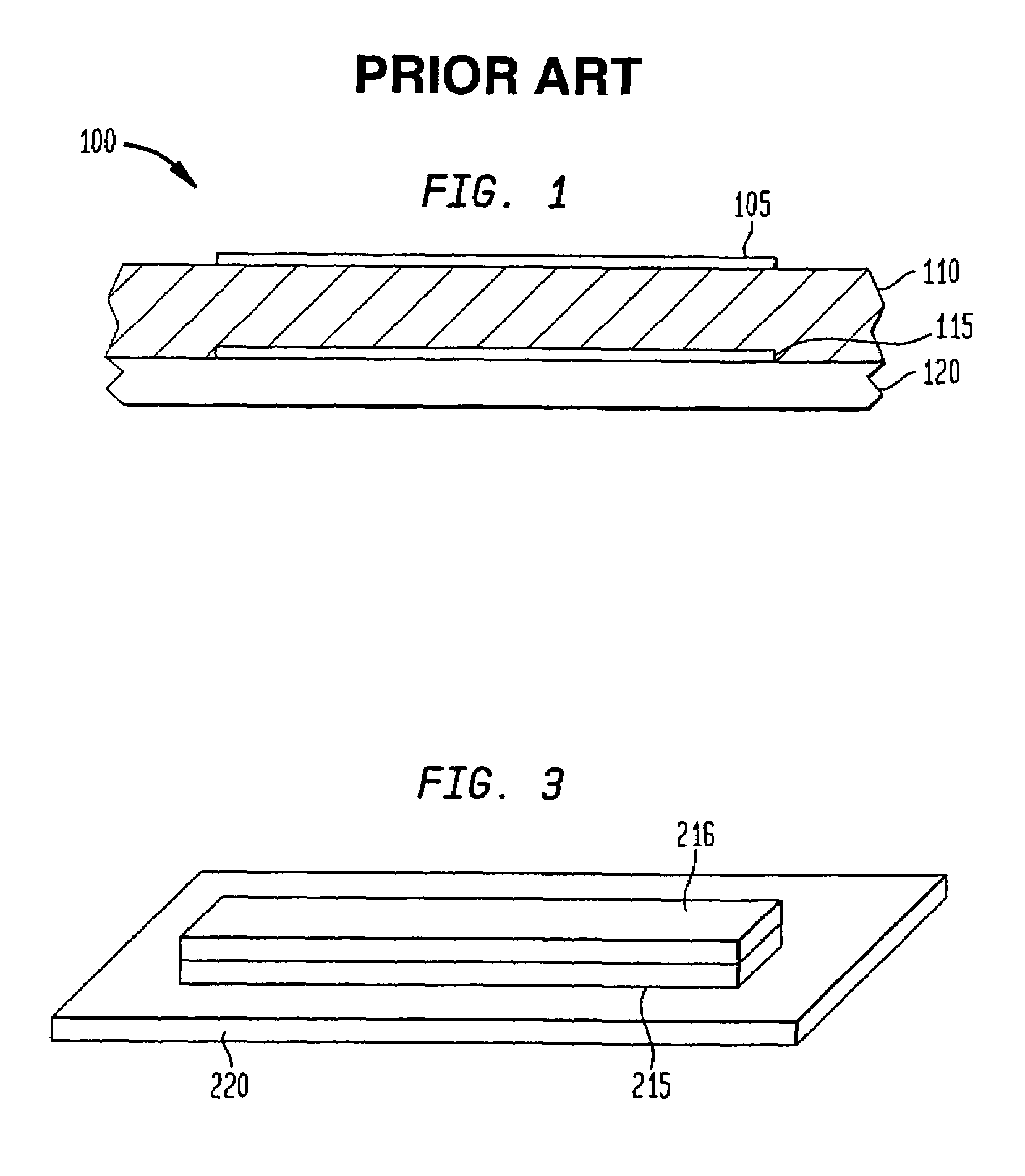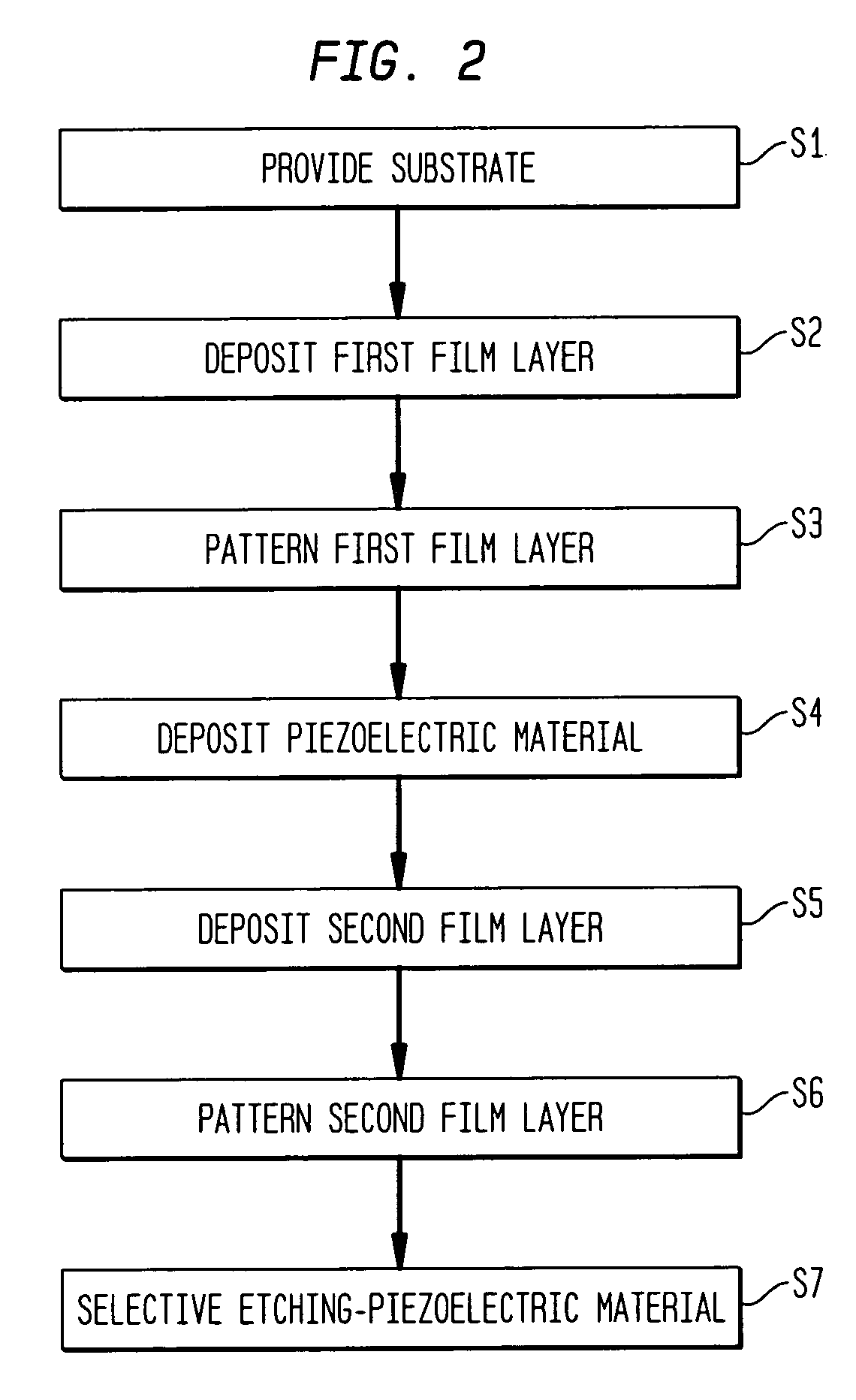Method of isolation for acoustic resonator device
a resonator device and acoustic energy technology, applied in piezoelectric/electrostrictive transducers, device material selection, conductive pattern formation, etc., can solve the problems of reducing affecting the efficiency and performance of the device, and affecting the efficiency of the device, so as to prevent the growth of the device, reduce the amount of acoustic energy, and inhibit the effect of device efficiency and performan
- Summary
- Abstract
- Description
- Claims
- Application Information
AI Technical Summary
Benefits of technology
Problems solved by technology
Method used
Image
Examples
first embodiment
[0018]FIG. 2 illustrates the method of isolating an acoustic resonator device in accordance with the present application. Though there can be a myriad of thin film process steps involved in the batch fabrication of a TFR acoustic resonator device as there is in fabricating any modern integrated circuit, the vast majority of these processes involve repeated applications of three primary operations: deposition, lithography, and etching.
[0019]Referring to FIG. 2, initially a base support structure such as a substrate is provided (Step S1). In this case, the base structure is not integral to device operation; it primarily provides mechanical support. The base structure, hereinafter “substrate” may be a silicon wafer substrate, and preferably may include a plurality of alternating acoustic reflecting layers of acoustically mismatched materials such as SiO2 and AIN which are mounted on a solid substrate such as a silicon, quartz, or glass wafer. Further, the substrate may be a membrane wh...
third embodiment
[0033]The piezoelectric effect, and therefore the performance of the TFR, is thus strongly affected by the orientation of the piezoelectric crystals. The crystalline orientation, in turn, is highly sensitive to the surface upon which the material is grown. The third embodiment leverages this sensitivity to substrate surface structure by pre-patterning the substrate into regions where the material will grow with well-oriented crystalline structure and those where it will grow with poor orientation. In this embodiment, the crystal structure is “disrupted” in regions outside the discrete resonator structures, rendering those regions incapable of transducing waves, mechanically different than the oriented material such that an acoustic reflection will occur, and if disrupted or altered enough (such that for example crystal morphology is strongly affected) of even transmitting an acoustic wave.
[0034]Referring to FIG. 8, after obtaining the substrate (Step S21), a first metal film is depo...
PUM
| Property | Measurement | Unit |
|---|---|---|
| thick | aaaaa | aaaaa |
| thick | aaaaa | aaaaa |
| piezoelectric | aaaaa | aaaaa |
Abstract
Description
Claims
Application Information
 Login to View More
Login to View More - R&D
- Intellectual Property
- Life Sciences
- Materials
- Tech Scout
- Unparalleled Data Quality
- Higher Quality Content
- 60% Fewer Hallucinations
Browse by: Latest US Patents, China's latest patents, Technical Efficacy Thesaurus, Application Domain, Technology Topic, Popular Technical Reports.
© 2025 PatSnap. All rights reserved.Legal|Privacy policy|Modern Slavery Act Transparency Statement|Sitemap|About US| Contact US: help@patsnap.com



